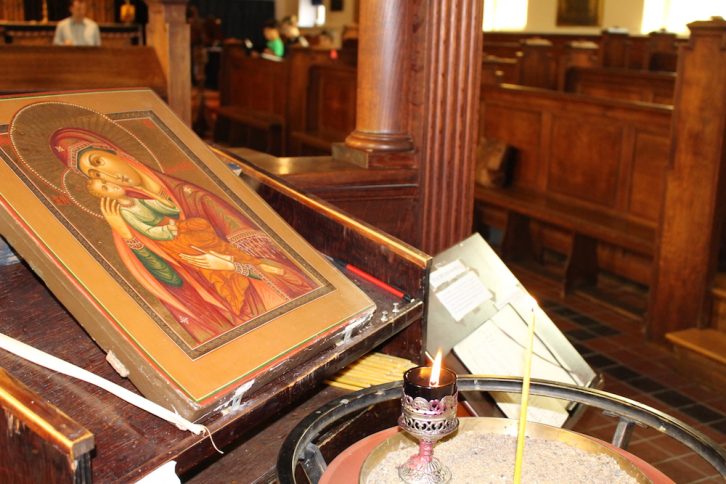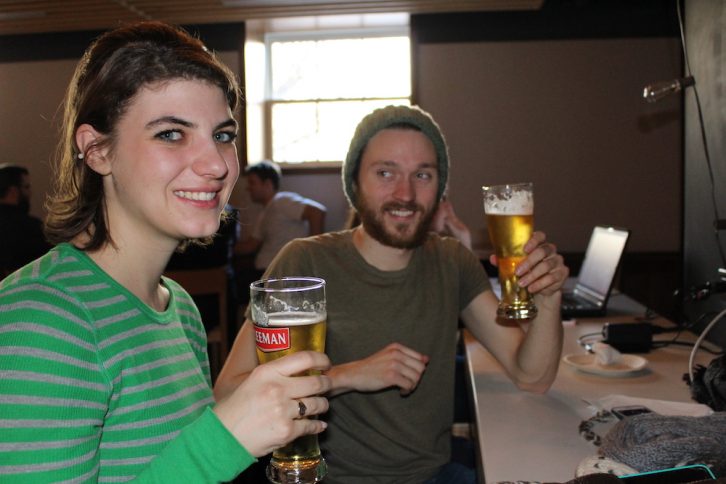Culture
What Canadians might not know about St. Patrick’s Day
Five things Irish people want Canadians to know about their national holiday

caption
University students dress in green to celebrate St. Patrick's Day.
caption
University students dress in green to celebrate St. Patrick’s Day.St. Patrick’s Day has been celebrated in Canada every year since 1824, but there are some things that Canadians might not know about the holiday.
Kevin Murphy, of the United Irish Society of Montreal, says that Canada’s celebration of the holiday began in Montreal after a surge of Irish people immigrated there. The city’s Irish population doubled again in the 1840s during Ireland’s Great Famine.
In the 2011 census 4,544,870 Canadians claimed they are of Irish descent, while the population of Ireland was only 4,588,252 that same year.
Here’s what Irish experts think Canadians need to know about St. Patrick’s Day.

caption
A candle is lit in the King’s Chapel on St. Patrick’s Day.It began as a religious holiday
St. Patrick’s Day began as the celebration of the saint who is said to have brought Christianity to Ireland. St. Patrick’s Day — in line with the Catholic feast days — is celebrated on the anniversary of St. Patrick’s supposed death: March 17, 461 AD.
Thought to have been born in Roman Britain, Scotland, or Wales, St. Patrick was said to have been carried to Ireland by pirates. There, he was enslaved as a shepherd for six years. After escaping to Britain, he returned Ireland to convert people to Christianity.
“The real way to celebrate St. Patrick’s Day is to go back to the roots, and celebrate it as a religious feast,” says Donal Irving, an unofficial historian for the St. Patrick’s Society of Montreal. “Celebrate the man who brought Christianity to Ireland.”
Today, St. Patrick’s Day is considered a secular holiday as the Vatican has not substantiated St. Patrick’s sainthood.
“There’s no religious celebration that goes on around St. Patrick’s Day,” says Irving. “It’s all more secular; it goes around the drinking, the parading and the socializing.”
The significance of the shamrock (clover)
The three-leaf plant that has become worldwide symbol of St. Patrick’s Day supposedly owes its fame to St. Patrick. The legend says that he used the shamrock to explain the trinity to Ireland’s High King. The trinity is the Christian understanding of God as three persons: the Father, the Son and Holy Spirit.
St. Patrick’s Day is celebrated in Ireland by both Protestants and Catholics, but historically it’s customary for Catholics to pin a shamrock to their clothing on the holiday.

caption
Patrons wear green to the King’s Wardroom happy hour.Not actually a drinking holiday
In Halifax, Gus’ Pub and Grill may have a St. Patrick’s Day event called Mega-Puketacular, but in Ireland drinking is not the focus of the holiday.
John Prendergast is an Irish professor at Saint Mary’s University from the Irish Canadian University Foundation. This year, he is spending his first St. Patrick’s Day in Canada.
“If it were to be more Irishy, it would be about family and more community based,” says Prendergast. “It’s more than getting up at six in the morning to queue in the cold and get a pint in the morning.
“There’s the music, the social elements and the language elements; it’s an entirely cultural affair really.”
Prendergast says St. Patrick’s Day is everybody’s day to celebrate Irishness — “whether you’re completely Irish or have absolutely no blood quantum — it’s just a day to enjoy.”
Seachtain na Gaeilge
Seachtain na Gaeilge is the largest Irish language festival in the world, held during the two weeks leading up to St. Patrick’s Day.
According to the Seachtain na Gaeilge, a non-profit organization that promotes the festival, Irish is one of the oldest written languages in the world, having appeared during the 5th century.
“It’s a matter of tradition and knowing where we come from,” says Prendergast of preserving the Irish language. “It helps us understanding things that happened in the past.”
Tá #Gaeilge an-tábhachtach do @CKKilkenny93 – úsáid í do @snagaeilge! Here @DubGAAOfficial's Ciarán Kilkenny tells about his 'gra' for Irish pic.twitter.com/HLDpEeFgFN
— The GAA (@officialgaa) March 13, 2017
Rang a dó agus Rang a trí ag canadh 'Tóg mo lámh' @BandPictureThis @Eoghan2FM @SnaGaeilge #SnaG2017 #picturethis #number1fans #makeourday pic.twitter.com/JJvSZaRCri
— Kilbehenny NS (@kilbehennyns) March 15, 2017
Legend of the snakes
Some argue that snakes have not been native to Ireland since the end of the Ice Age, but others credit St. Patrick with chasing them away.
Traditionally, bishops use shepherd staffs as a symbol of their role as shepherds of the people. It’s said that St. Patrick used his staff to chase the snakes out of Ireland.
“Everybody knows that legend,” says Irving. “But if you ask ‘what did he really do?’, nobody knows.”

